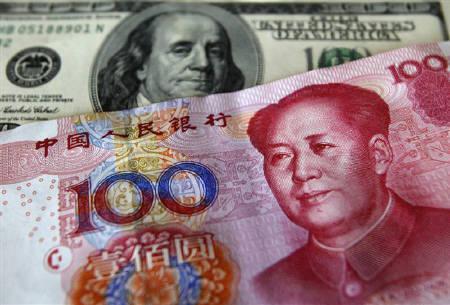Long march of China's currency yuan
|
|
|
On July 21, 2005, China abandoned a decade-old peg to the U.S. dollar by allowing its currency to fluctuate against a basket of currencies and appreciate by 2.1 percent. Since then, the yuan has strengthened further, though slowly, and risen more than 21 percent against the greenback. |
Ge Yafang, who runs a textile company in eastern China's Jiangsu Province, always says her destiny was changed by the reform of China's exchange rate policy.
Ge, president of the Black Peony Co., said the company was "forced" to shift to a technology-driven operation from its previous labor-intensive workplace. "I had to make the change, or the rising yuan might have pulled the company into bankruptcy," she said.
The Black Peony Co. exports clothing of jeans, Khaki cotton and corduroy to countries such as the United States and Japan. Like most of China's export businesses five years ago, the company's development was supported by vast supplies of cheap labor and inexpensive raw materials.
On July 21, 2005, China abandoned a decade-old peg to the U.S. dollar by allowing its currency to fluctuate against a basket of currencies and appreciate by 2.1 percent. Since then, the yuan has strengthened further, though slowly, and risen more than 21 percent against the greenback.
The gradual appreciation of the yuan has forced China's exporters to promote innovation and move up the value chain to improve profitability, said Zhang Yansheng, a researcher at the National Development and Reform Commission, the country's top economic planner.
The Black Peony Co. was one of the winners during this national transition. Profits in the company surged to 365 million yuan (53.8 million U.S. dollars) in 2009 from only 21 million yuan in 2005.
"The reform in 2005 is quite successful," said Li Daokui, a member of the monetary policy committee of China's central bank. "A managed, gradual and independent appreciation has helped ease the imbalance of international payments in the country."
After a strong appreciation in the first three years following the reform, China's yuan exchange rate started to stabilize in the second half of 2008.
As the world's third largest economy, China's efforts to maintain a stable yuan during the crisis greatly contributed to sustaining the world economy, analysts said.
On June 19 of this year, the People's Bank of China (PBOC), the central bank, announced that it would further the reform of formation mechanisms of the yuan exchange rate to improve its flexibility. At the same time, it ruled out a one-off revaluation.
Of the 23 trading days following June 19, 14 days saw the central parity of the yuan was set stronger than the previous day, while eight days recorded weaker central parity rates.
The central parity rate of the yuan was set at 6.7802 per U.S. dollar on Wednesday, according to data released by the China Foreign Exchange Trading System. The currency is allowed to float on the inter-bank market within a daily limit of 0.5-percent each way of the central parity rate.
"There is no basis for a sharp appreciation of the yuan in the short term. The movement of the yuan's exchange rate against the U.S. dollar in the coming 5 to 10 years will depend upon U.S. monetary policy," Li said.
Large fluctuations in the yuan exchange rate would not only hurt China's exports, but also dampen the global trade improvement, said Ding Zhijie, professor at the Beijing-based University of International Business and Economics.
"China is now the world's largest exporter, but processing trade takes up a large part in the country, which means a fall in China's exports will affect exports in many other countries," Ding said.
China needs to follow a managed floating of its exchange rate, which is a fundamental need for its economic restructuring and the optimizing of the allocations of its resources, Hu Xiaolian, PBOC deputy governor said.
This policy would reduce China's trade imbalance and excessive reliance on exports and help sustain economic growth by relying more on domestic demand, Hu said.
Despite efforts to increase the flexibility of the yuan exchange rate, China is also striving to push forward its internationalization, which analysts believe has a long way to go.
The new development is in the expansion of yuan trade settlements. Cross-border yuan trade settlement is now allowed in all countries and regions, after starting first in Hong Kong, Macao and 10 member states of the Association of Southeast Asian Nations.
Another much-anticipated move is the establishment of an international board on the Shanghai Stock Exchange, a step forward to internationalize the yuan.
 0
0 







